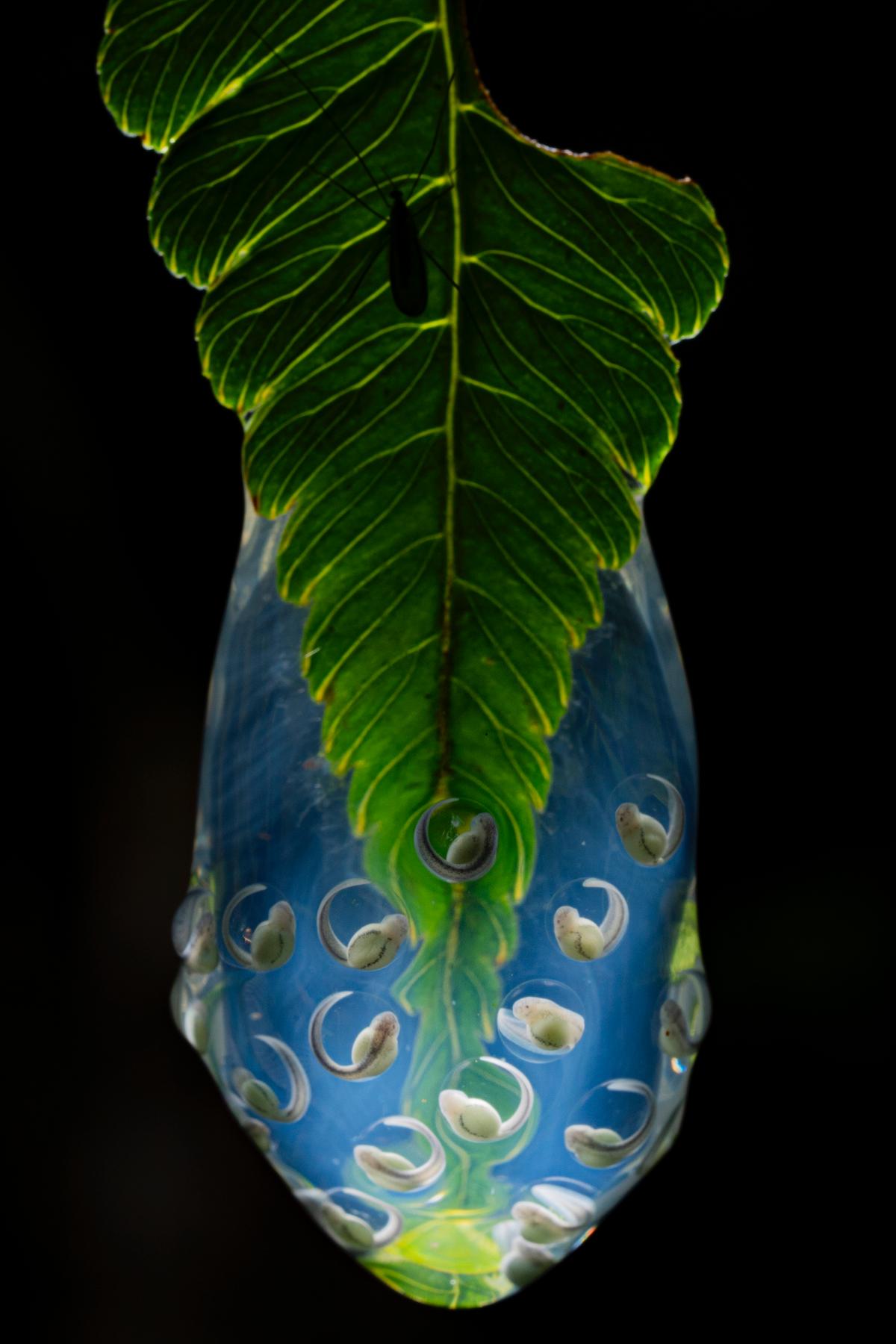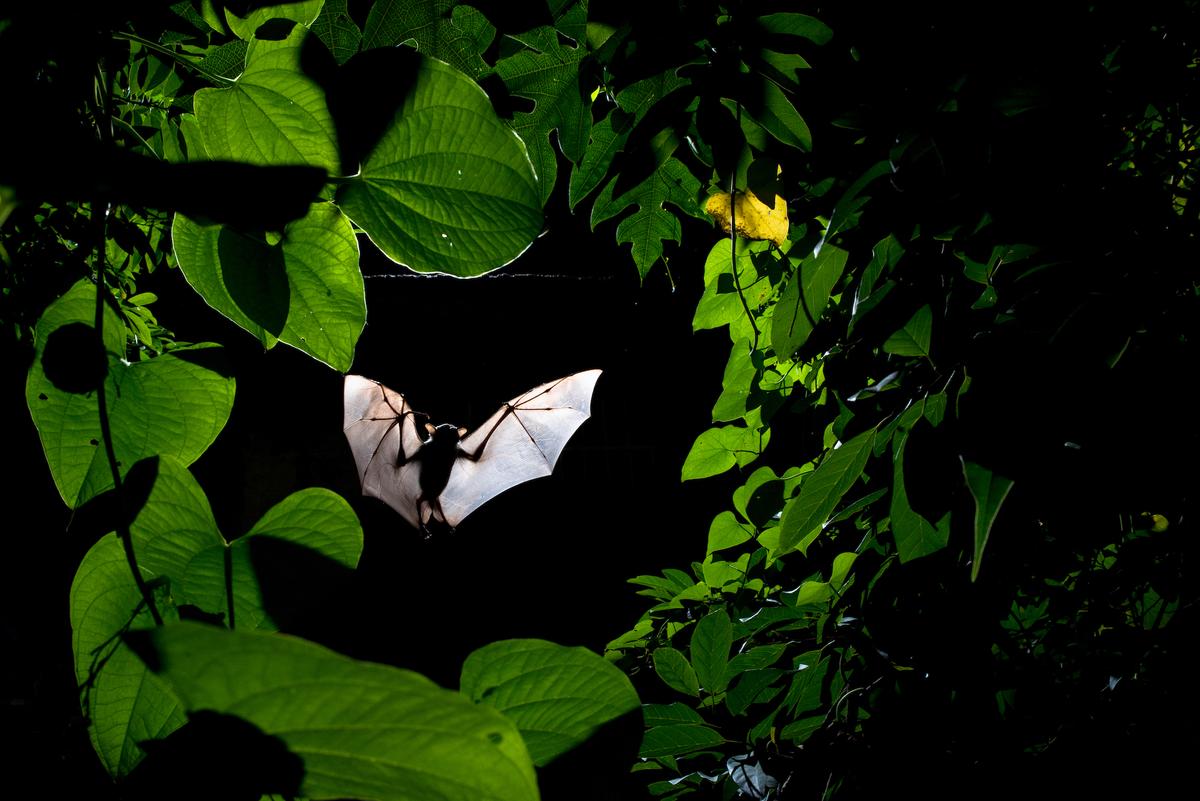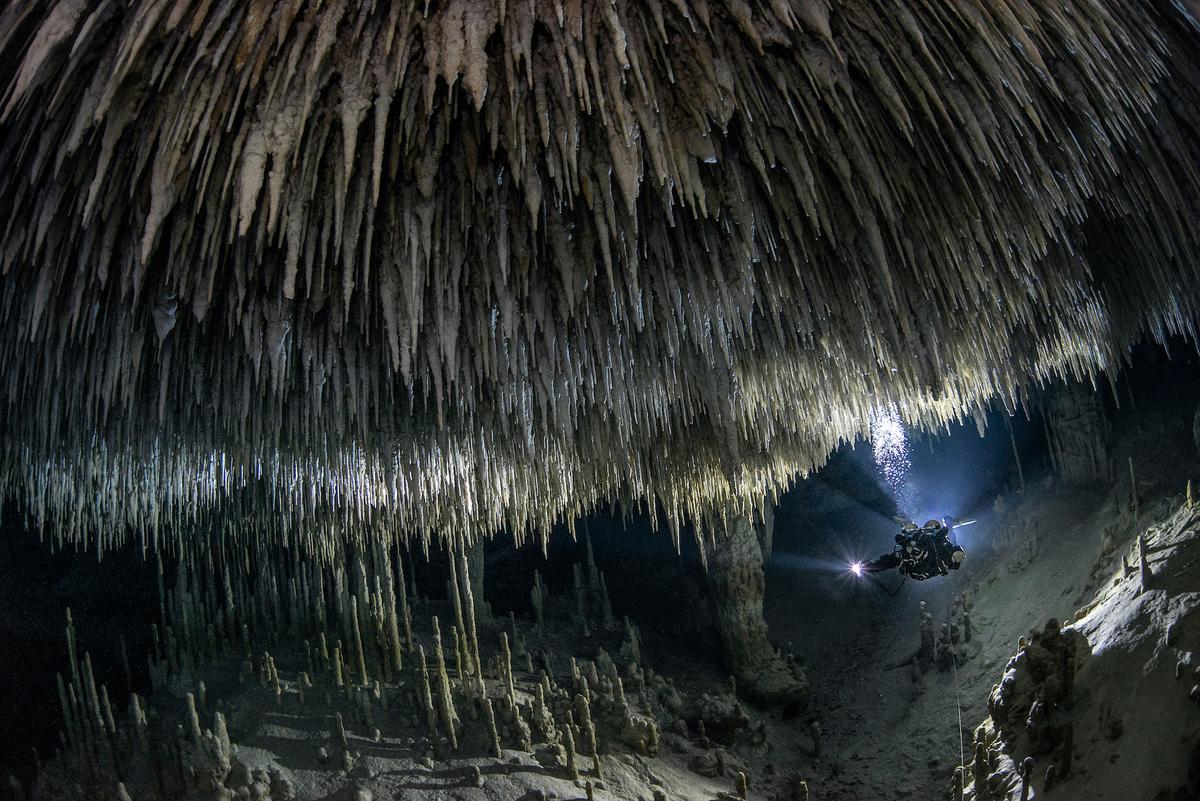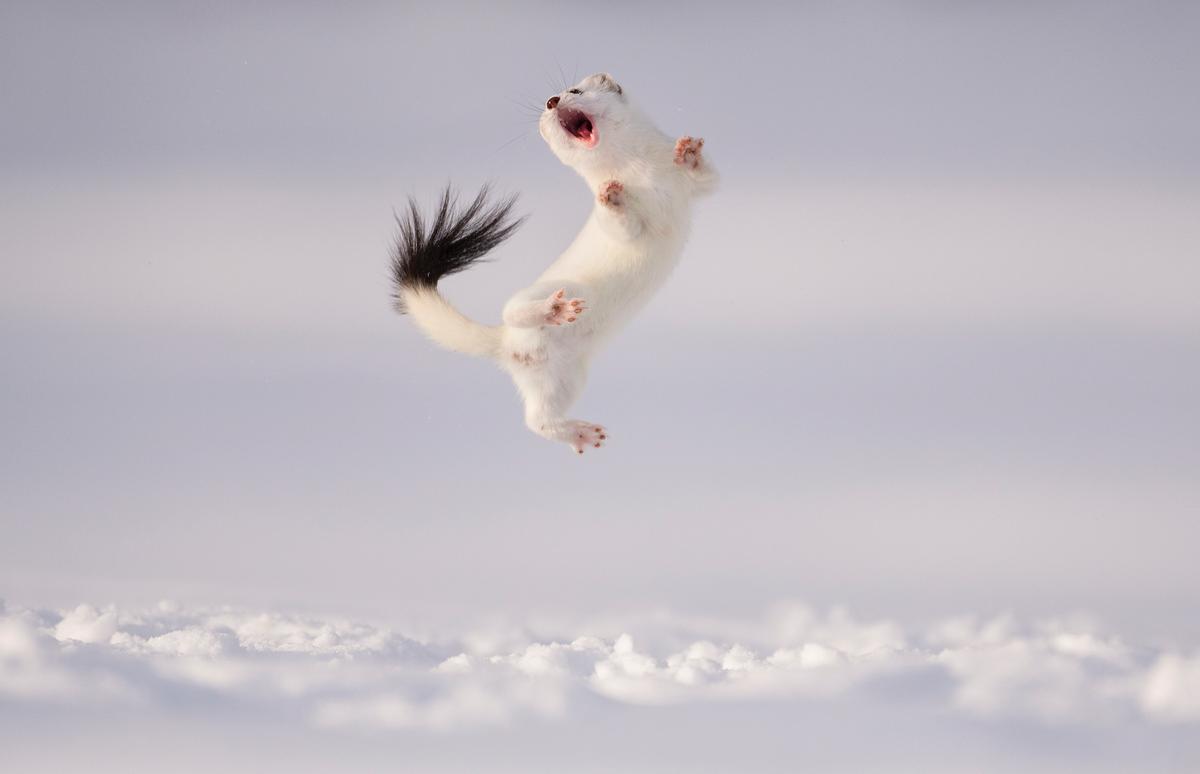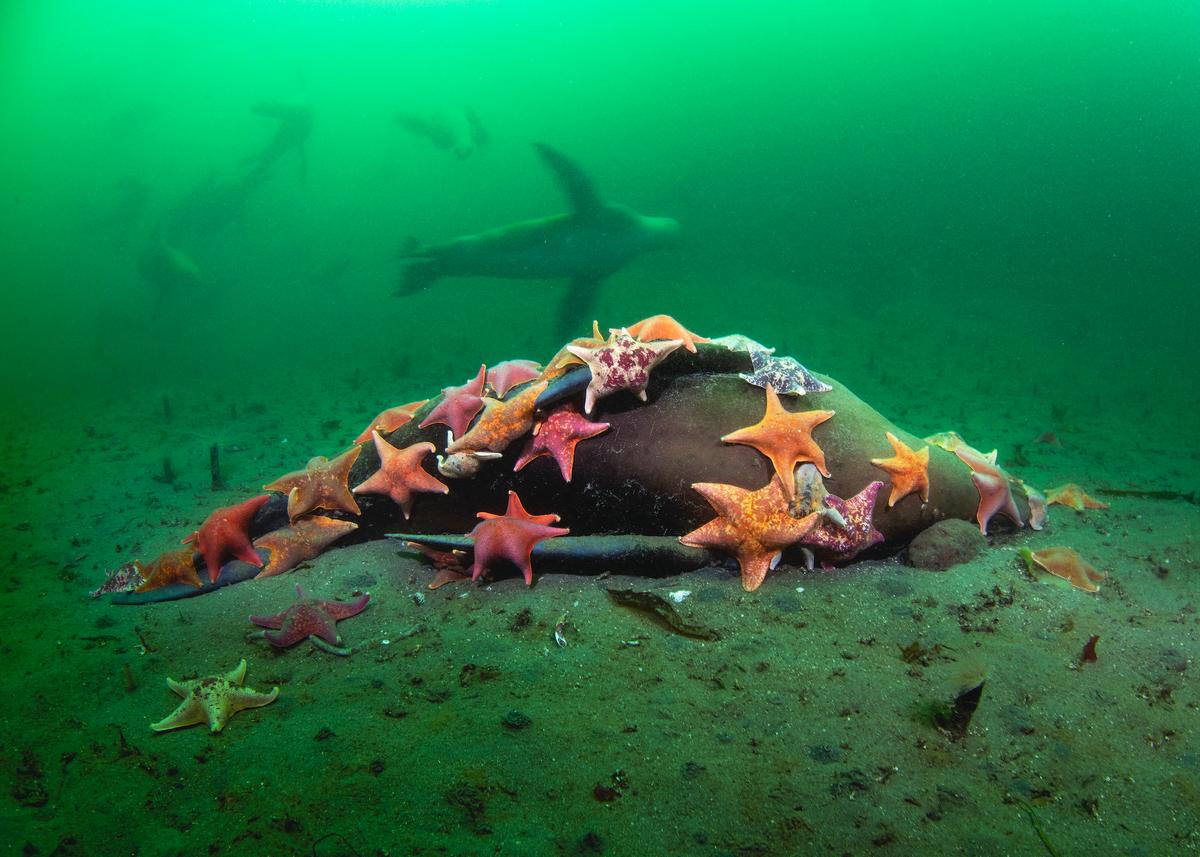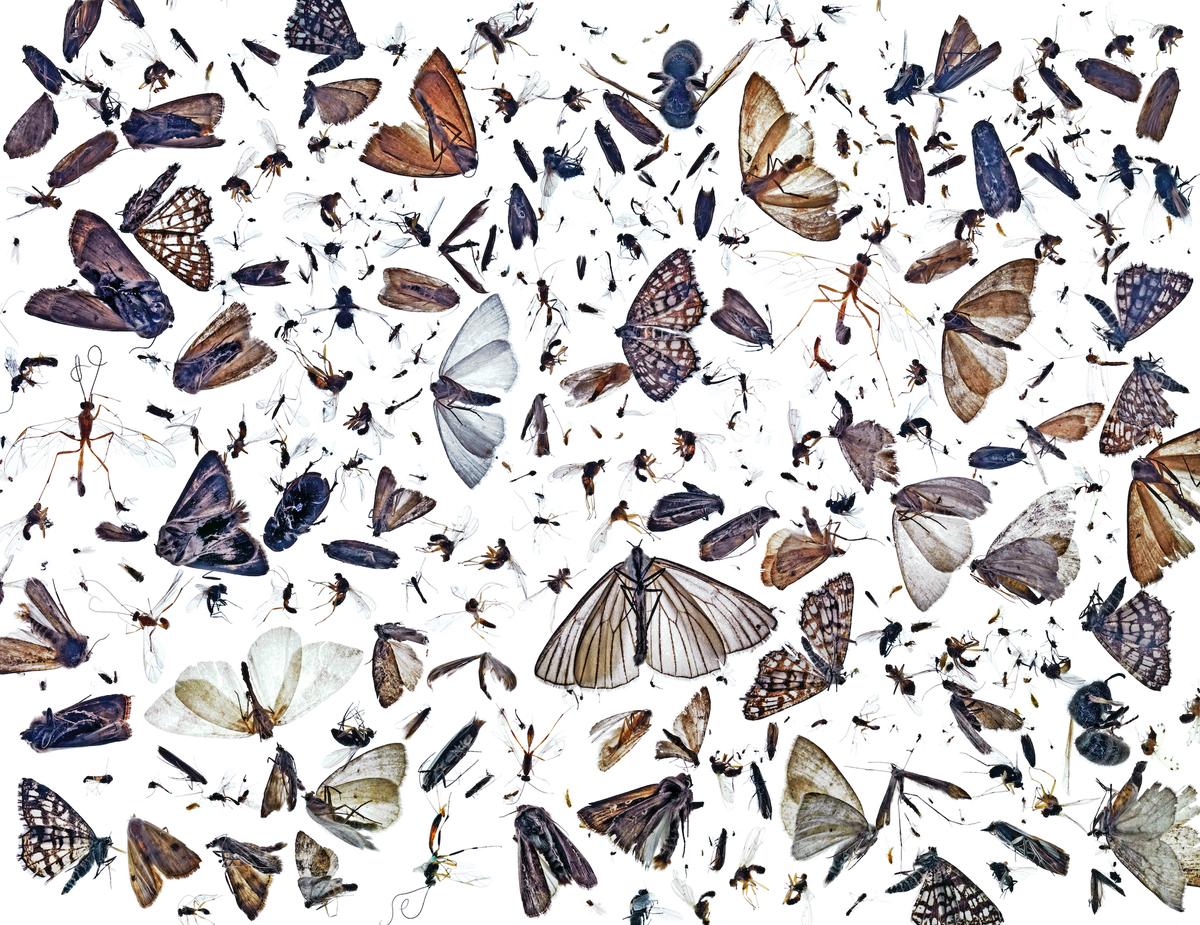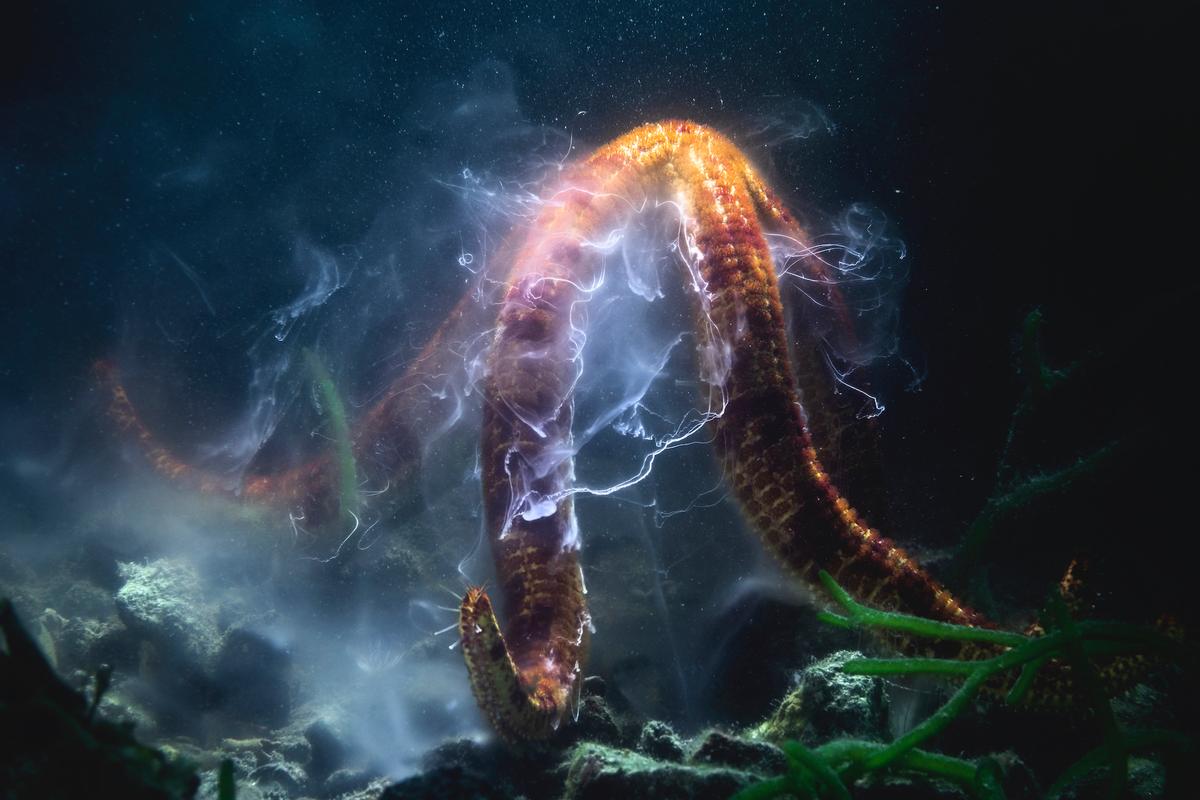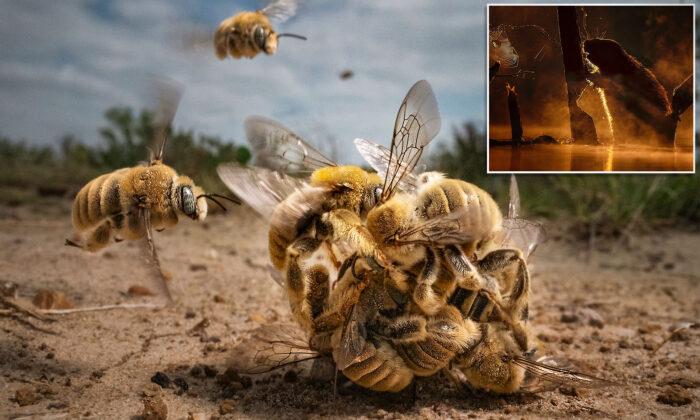Grand Prize Winner
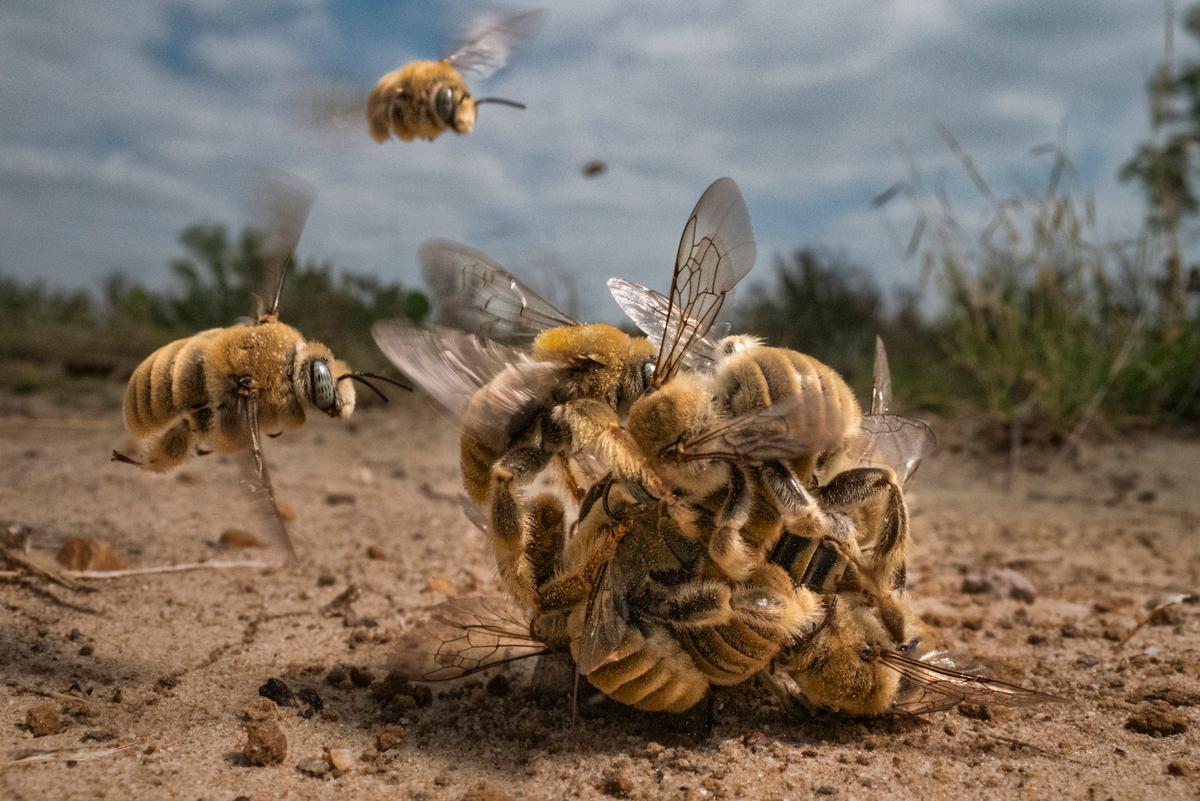
On a warm spring morning in South Texas, a female cactus bee (Diadasia rinconis) emerged from her small, cylindrical nest in the ground, rising like ash from a chimney. Almost instantly, she was swarmed by dozens of patrolling males, their tawny bodies forming a buzzing, roiling “mating ball” as they vied for a chance to “court” her. After a tumultuous 20 seconds or so, the ball of bees dissipated, and the female flew off — a single, victorious male holding tight to her back.
Because they make individual nests rather than living in a collective hive, cactus bees are considered solitary. However, the designation is somewhat misleading; the bees nest in close proximity to one another, and their mating aggregations can number in the thousands — a spectacular, highly charged sight for any lucky human observers. “Mating in the bee balls often takes place on extremely hot, bare ground,” said entomologist Avery Russell from Missouri State University, “so the grappling males might risk cooking themselves [to mate].” They also face stiff competition. “The sex ratio in this species is often wildly lopsided, with single females emerging occasionally, dozens of patrolling males finding her in seconds, and potentially thousands of males flying overhead,” he added.
Aquatic Life Finalist
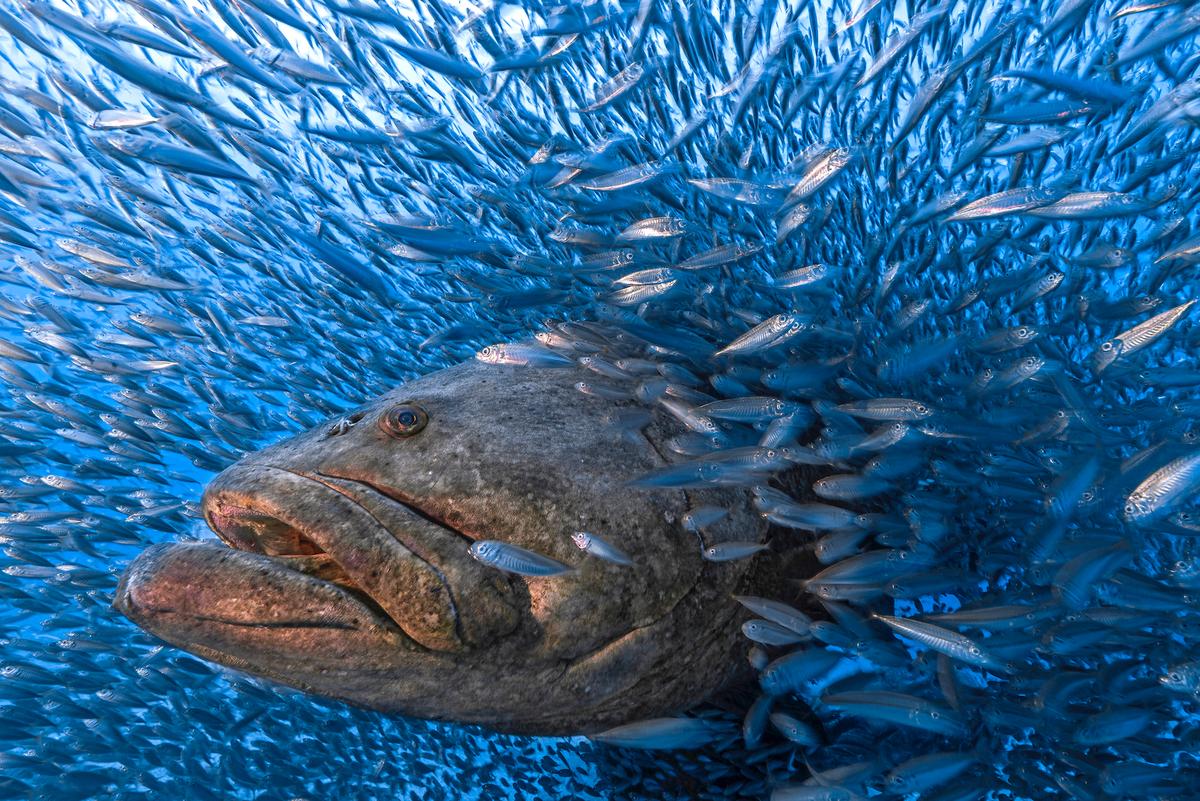
Each year, from August to early October, Atlantic goliath groupers (Epinephelus itajara) gather off the east coast of Florida to spawn. On dark nights when the moon is new, refrigerator-sized males produce low-frequency booming sounds by contracting their swim bladders, calling other groupers to congregate around shipwrecks or rocky reefs. Fifty years ago, more than 100 fish might answer the call. But by 1990, the slow-moving species had been reduced to just a handful of fish. That year, goliath groupers were protected, and the population slowly began to recover. While Florida’s mating aggregations have not yet attained the numbers local fishermen recall from the 1970s, it’s now common to see 20 to 40 groupers together during the breeding season.
Human/Nature Finalist
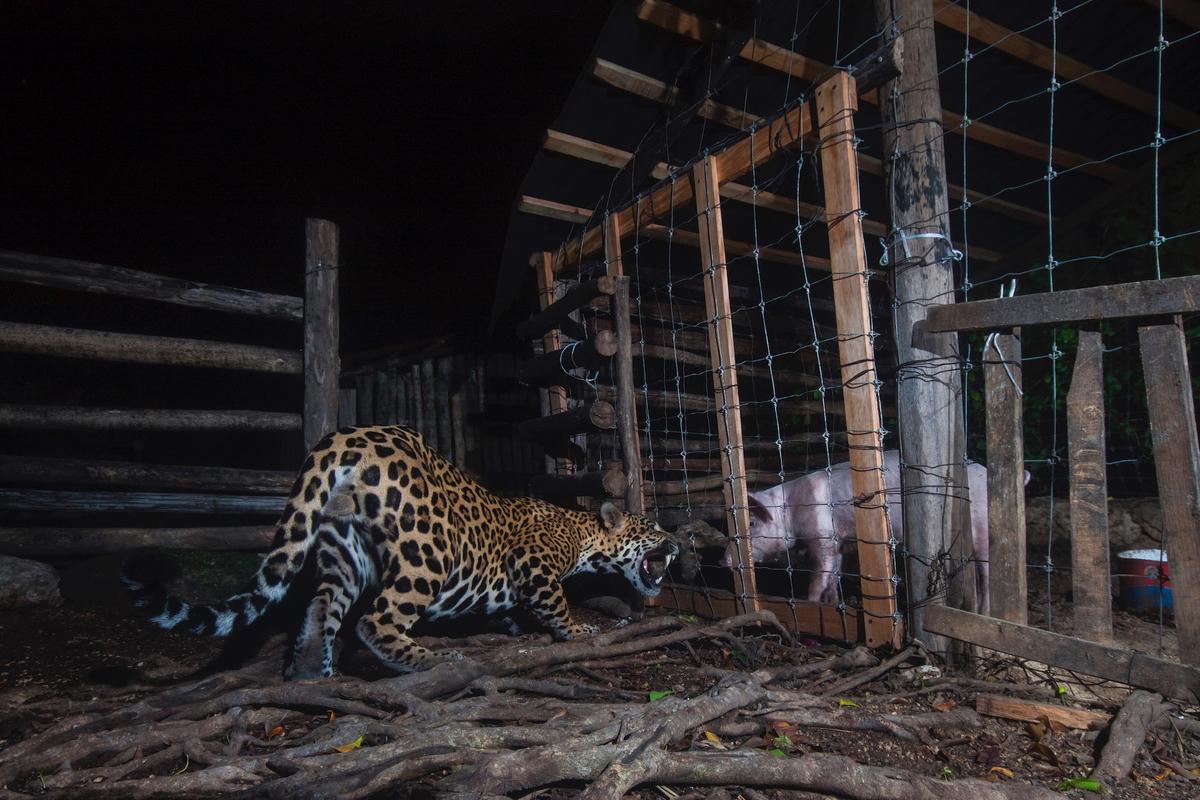
Two creatures face off through a woven-wire fence: one predator, the other prey; one wild, the other raised for our use. The moment is a manifestation of two worlds colliding, with no clear indication of which will prevail. Such images, of the natural world intersecting with one so heavily impacted by humans, have become a near obsession for Mexico-based photographer Fernando Constantino Martínez Belmar. And few places in the world present as many opportunities to capture the conflict firsthand as Martínez Belmar’s native Yucatán Peninsula, home to both the elusive jaguar (Panthera onca) and one of Mexico’s fastest-growing tourist hotspots, the “Maya Riviera.”
The largest predators in the neotropics, jaguars require a significant amount of space in order to find sufficient prey — the average home range of a male jaguar spans some 38 square miles. Inevitably, as human populations have expanded into the jaguar’s habitat, the species’s distribution has shrunk. Scientists are now working to identify conservation strategies and priorities to best support the remaining populations. In Mexico, one of the most important regions of focus is the state of Quintana Roo on the Yucatán Peninsula, which is home to nearly half of the country’s 4,000–5,000 jaguars. Here, the cats are thriving in two protected areas: Yum Balam on the northern tip of the peninsula and Sian Ka’an some 140 miles to the south. Between the two reserves sit Cancún, Playa del Carmen, and Tulum.
Terrestrial Life Winner
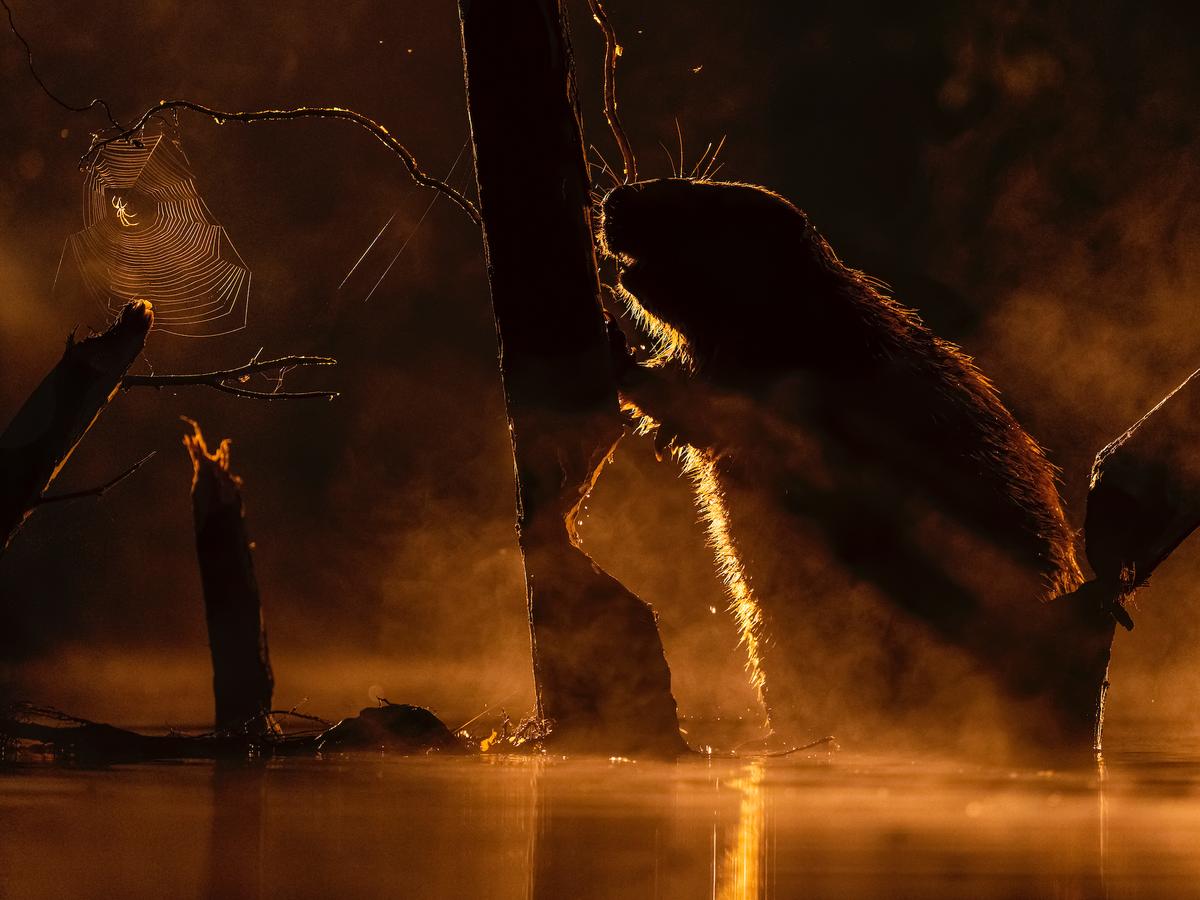
It was dawn in Hungary’s Kiskunsag National Park, and photographer Bence Máté lay still, barely breathing, on a coffin-sized floating hide. In front of him, a Eurasian beaver (Castor fiber) was busy gnawing on a tree, backlit by the first rays of morning sun. Nearby, previously felled trees emerged like dock pilings from the mist-shrouded water, one of them festooned with a glowing spider web. The ethereal scene was more than just beautiful; it was a striking illustration of the idea that beavers transform their environments when they build dams, creating habitats that are utilized by many other species.
Eurasian beavers were once widespread across Europe and Asia, but the large rodents were hunted to near-extinction in the 1800s. In Hungary, the last beaver was killed in 1865. The species faced a similar fate across Eurasia, and by the beginning of the 20th century, scientists estimated there were only about 1,200 individuals left in eight relic populations.
More Winners of BigPicture Photography Competition 2022
Human/Nature Finalist